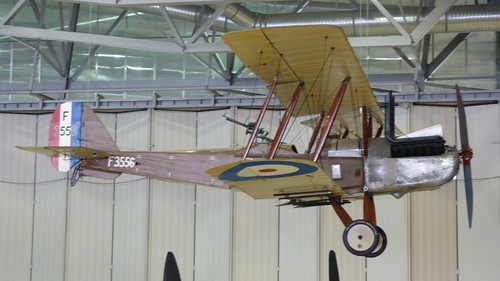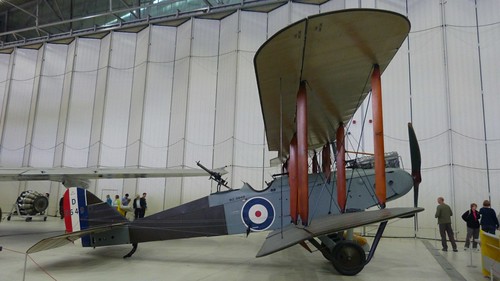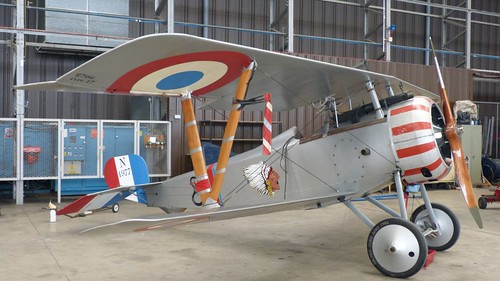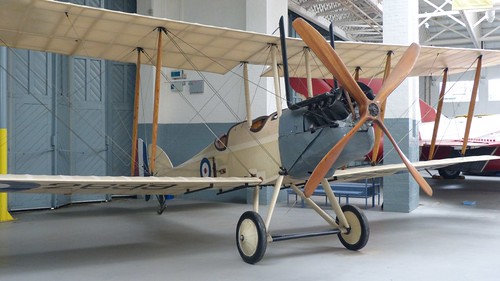As we come to the last blog of 2014, it is timely to reflect on the 100th. anniversary of the outbreak of World War One (WW1) and rightly so.
A chance then to look back at some of what we went to war with.
Surprisingly, the small number of aircraft from that time have not been brought together to form a single exhibit. Instead they are spread around in oddments.
F 3556
A Royal Aircraft Factory (RAF) RE 8 (Reconnaissance Experimental) dating from 1916.
Powered by a ‘RAF’ V12 engine. Built as a bomber it carried an observer/gunner in the rear cockpit.
This particular aircraft was built by Daimler and survived the war by only having arrived in France on Armistice Day 1918.
D 5649
The Airco/De Havilland DH 9 was intended to replace the earlier DH4 but powered by a 230hp Siddeley Puma engine, its performance was not as good as the DH4 and losses on operations were severe.
Eventually re engined with the American ‘Liberty’ engine it went on to achieve success as the DH 9A.
By virtue of its internal bomb bay, it has become regarded as a very early example of the ‘strategic bomber’ and as such was a forerunner of the Lancaster and Vulcan.
It is intended to restore the aircraft to flying condition.
N 1977
A Nieuport 17 single seat fighter developed from the earlier N 11. Powered by a Le Rhone 130hp engine, the type had one fixed forward firing machine gun as armament.
As well as the French air Force, it also served with Britain’s Royal Flying Corps (RFC) and the Royal Naval Air Service.
Introduced in early 1916, a year later it had been outclassed by more modern German fighters.
2699
A BE-2c of the ‘RFC’. Designed at the Royal Aircraft Factory but built by Rushton Proctor and Co. Ltd. It took part in wartime sorties against the Zeppelins in 1917.
Withdrawn from use in 1919 it was originally kept at the Imperial War Museum in London before coming to Duxford.
E 2581
A Bristol F2B. Usually known as the Bristol Fighter or ‘Brisfit’ in British service.
Powered by a Rolls-Royce Falcon engine and fitted with a fixed forward firing .303 machine gun and another flexibly mounted Lewis gun mounted in the rear cockpit.
By the end of the war, the 'Royal Air Force' which had come into being on the 1st.of April 1918 had 1,583 of the type in service.
Coming relatively late to the war in 1917, after a shaky start it acquitted itself ably and went on to serve with many other air arms worldwide into the 1930’s.
There is SPAD in the American section of the Museum which will be included in a later blog.





No comments:
Post a Comment